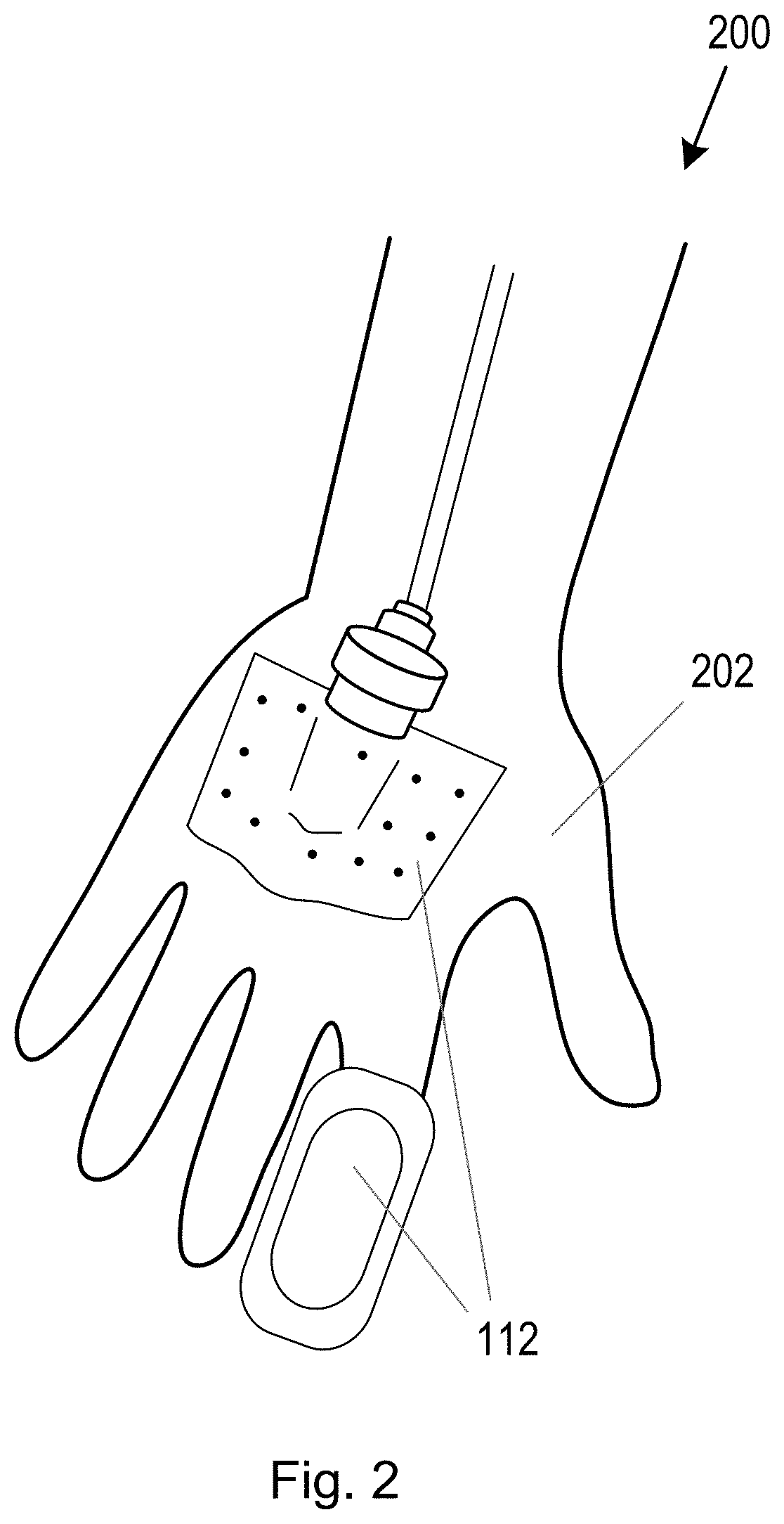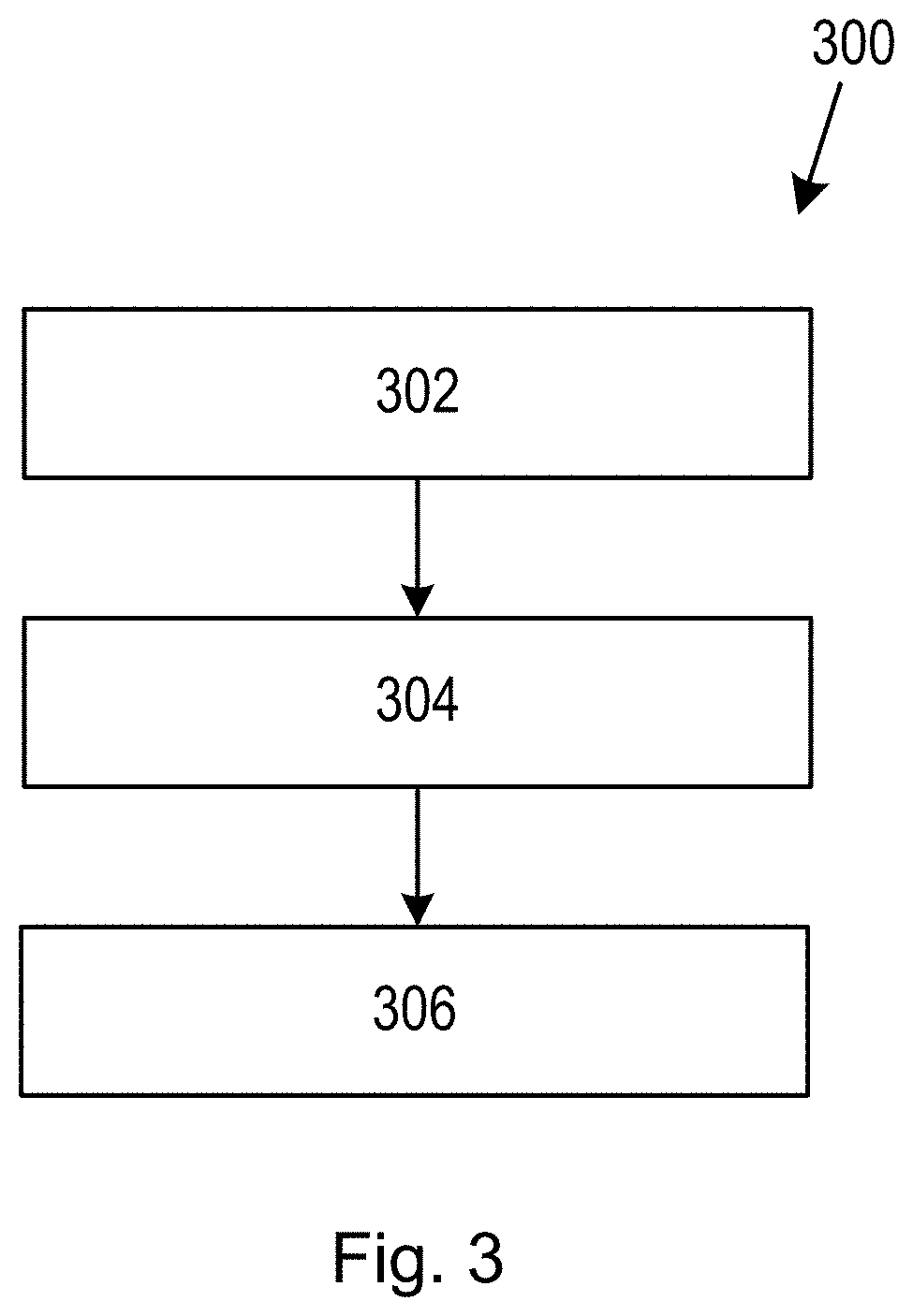Determining the likelihood of patient self-extubation
a patient and likelihood technology, applied in the field of determining the likelihood of patient self-extubation, can solve the problems of increased risk of further medical complications such as nosocomial pneumonia, increased time required for assisted ventilation, and extended hospital stay, so as to increase the risk, prolong the hospital stay, and increase the length of time
- Summary
- Abstract
- Description
- Claims
- Application Information
AI Technical Summary
Benefits of technology
Problems solved by technology
Method used
Image
Examples
Embodiment Construction
[0033]This disclosure relates to methods and systems for monitoring a patient and, in particular, for monitoring an intubated patient. The methods and systems disclosed herein may also be used for monitoring two or more patients simultaneously. A patient may be intubated in a care setting such as a hospital. A patient may be intubated when they are unable to breath on their own and therefore require assisted ventilation. Mechanical ventilation is one type of assisted ventilation. Assisted ventilation may be administered via an endotracheal tube placed into a person's windpipe via their mouth or nose. Both procedures enable a supply of gas, such as an oxygen-containing gas, to be delivered to the patient's lower airways.
[0034]It is known that an intubated patient undergoing assisted ventilation can experience discomfort, and intubation can result in the patient becoming restless and / or agitated. Indications that the patient is experiencing discomfort may include movement of various p...
PUM
 Login to View More
Login to View More Abstract
Description
Claims
Application Information
 Login to View More
Login to View More - R&D
- Intellectual Property
- Life Sciences
- Materials
- Tech Scout
- Unparalleled Data Quality
- Higher Quality Content
- 60% Fewer Hallucinations
Browse by: Latest US Patents, China's latest patents, Technical Efficacy Thesaurus, Application Domain, Technology Topic, Popular Technical Reports.
© 2025 PatSnap. All rights reserved.Legal|Privacy policy|Modern Slavery Act Transparency Statement|Sitemap|About US| Contact US: help@patsnap.com



